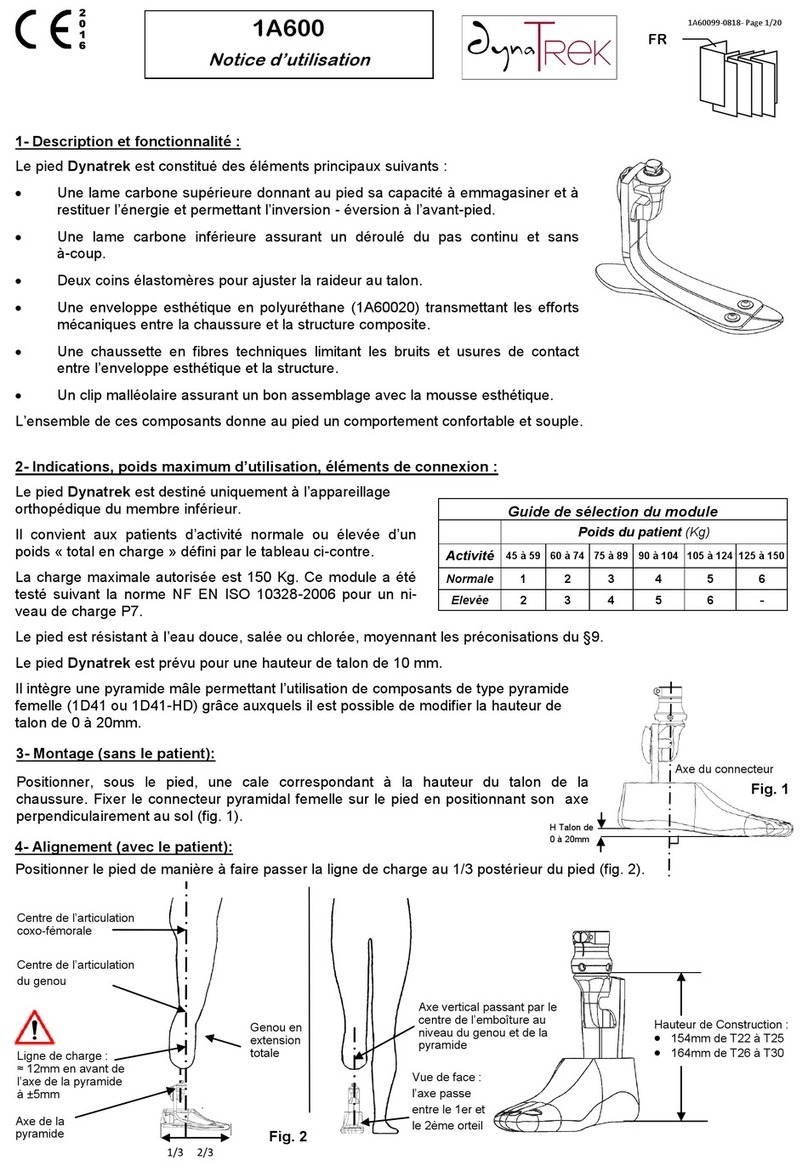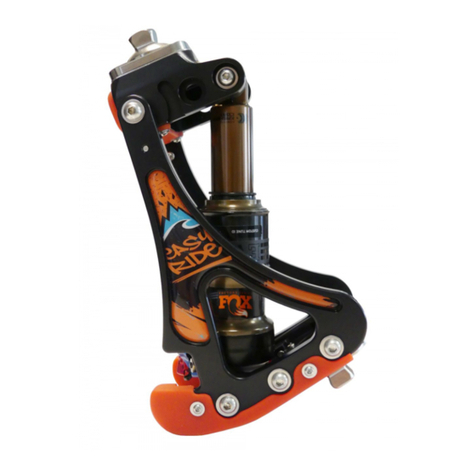
V : VERIFICATIONS: (Fig.12)
a/ Après installation de l'emboîture, vérifier qu'en flexion cette emboîture vienne toucher
l'arceau A1 du châssis avant que le bloc hydraulique B ne vienne toucher le bord interne
A2 du châssis.
b/ Les têtes taraudées Z1 seront en appui sur les bords du châssis A.
c/ Serrer le contre-écrou V.
d/ Démonter l'outil d'immobilisation en rotation Z.
VI : REGLAGES (Fig. 13, 14 et 15)
Mise à l'aplomb de l'unité hydra-cadence
a/ Maintenir l'unité hydra-cadence dans une position verticale
et marquer au crayon en avant du centre articulaire de la
cheville un repère situé à 12 mm. (fig.13)
b/ Utiliser le bouton B4 de réglage de hauteur du talon pour
modifier l'emplacement du centre articulaire de genou
(fig.15).
Le centre articulaire de genou doit passer par une ligne verticale
venant se situer au repère antérieur de 12 mm en avant de
l'articulation de cheville (fig.13)..
c/ La prothèse étant toujours placée sur une surface horizontale,
vérifier à l'aide d'un niveau que la face supérieure soit
parfaitement horizontale. Si nécessaire, modifier le réglage
par le piston de genou B1 (fig.14)
Pour ce faire :
- Desserrer l'écrou B2.
- Faire tourner le piston B1 en utilisant les clés spéciales
références 5F01 et 5F04.
- Le réglage désiré étant obtenu, resserrer l'écrou B2.
IMPORTANT
:
Après ce réglage, à l'aide d'une petite pierre à affûter,
supprimer la bavure sur les petits trous situés au niveau
supérieur de la tige de piston B1.
d/ Réglage de la cadence (fig.14).
Pour régler la vitesse de la cadence, agir sur le
bouton à base rouge B3.
Fermer complètement en tournant dans le sens des
aiguilles d'une montre, puis ouvrir en tournant la clé
de 3 tours 1/2 ou 7 demi-tours. Ne jamais aller au-
delà de cette limite sous peine de détériorer le joint
de caoutchouc.
Le réglage se fera dans cette limite, ce qui aura pour but de
réduire ou d'augmenter le passage du fluide, provoquant
une résistance ou non.
e/ Réglage de la hauteur de talon (fig.15)
Pour modifier la hauteur de talon sans changer l'aplomb de
la prothèse (exemple : changement de chaussure), agir sur
le bouton vert B4 .
1P5099-R-1113 6/21
Fig. 13
Fig. 15
B4
B2
Fig. 14
B3
B1
CORRECT
A1
A2
B
INCORRECT
!
!
!
!
Fig. 12
Z
(Z1/Z2)
B2
B1
A1
B
V
B3






























